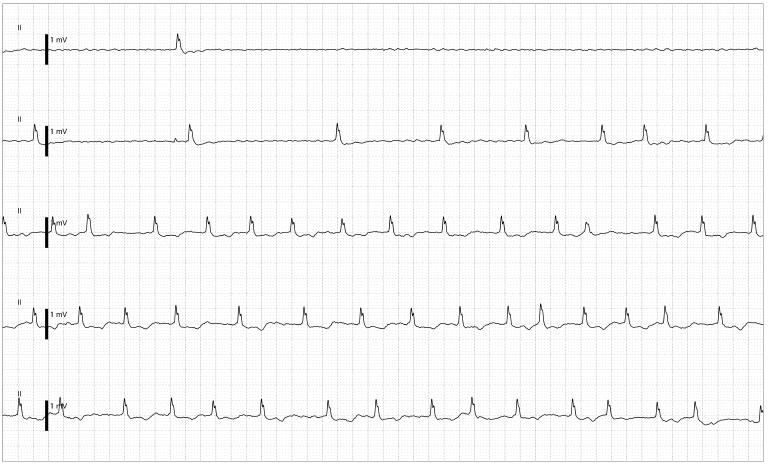Very long pause noted on ICU monitor
Very long pause noted on ICU monitor

Very long pause noted on ICU monitor (central monitor) of about 8 seconds and two more pauses of around 2 seconds can be seen in the tracing given above. The underlying rhythm is atrial fibrillation and there is some QRS widening with a notch. The pauses are followed by atrial fibrillation with a fast ventricular rate. Overall this suits a diagnosis of tachy-brady syndrome and warrants a permanent pacemaker, provided a reversible cause can be excluded. Capturing such a record obviates the need for Holter monitoring in this case. Long term anticoagulation has to be considered if the CHADS2 score [1] is high.
Modern day intensive care monitors have facility to record ECG rhythm data for a few days, depending on the software and memory capacity. Hence it is possible to retrieve the cardiac rhythm data after an event for documentation and analysis. This facility is usually restricted to bedside monitors which are connected to a central console. Stand alone bedside monitors seldom have long term storage facility. We can review data from the central monitor console depending on the events automatically logged by the device as well as scroll through the timeline to see events at a particular time. Print outs and electronic storage of the tracings are possible.
Reference
- Gage BF, Waterman AD, Shannon W, Boechler M, Rich MW, Radford MJ. Validation of clinical classification schemes for predicting stroke: results from the National Registry of Atrial Fibrillation. JAMA. 2001 Jun 13;285(22):2864-70.
